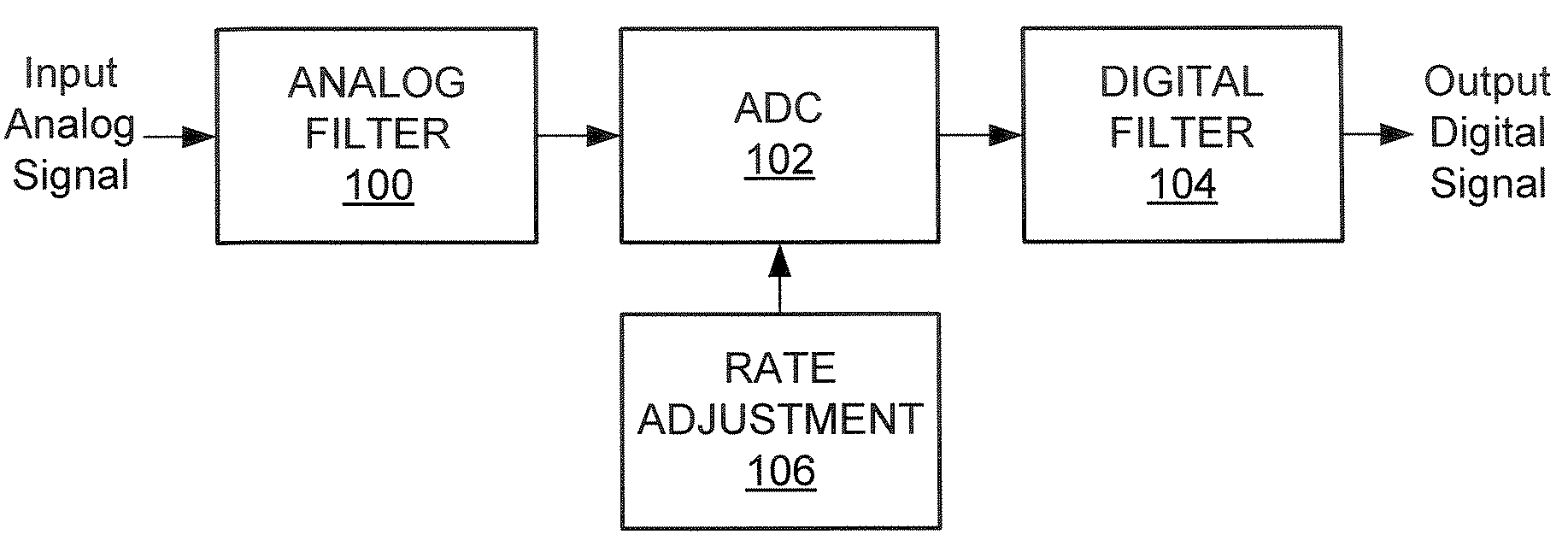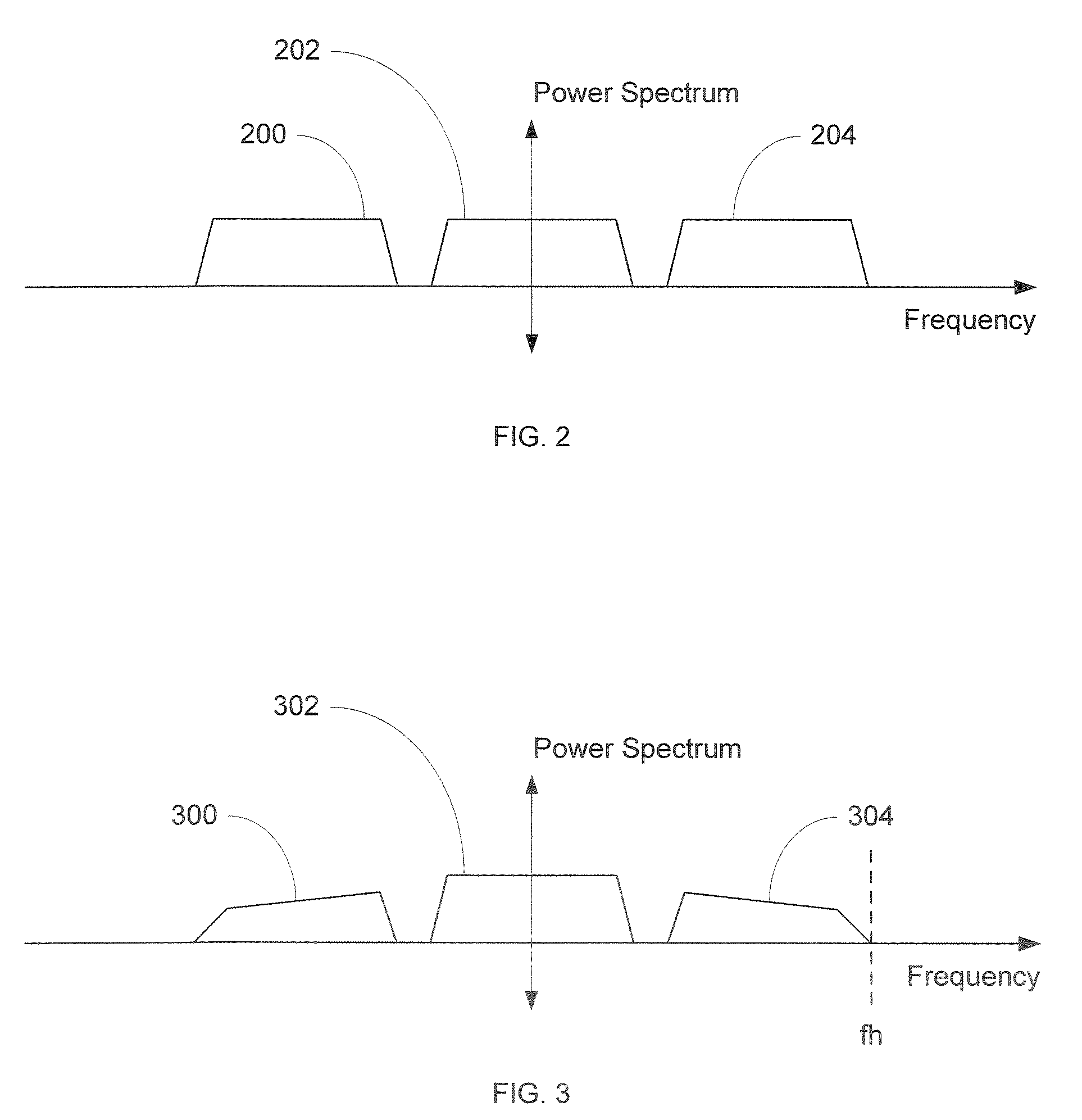Variable rate analog-to-digital converter
a converter and variable rate technology, applied in the field of wireless communication, can solve the problems of consuming a large amount of battery power, adcs can, and a significant portion of the power used by electronic devices, and achieve the effects of reducing power consumption, reducing sampling rates, and reducing power consumption
- Summary
- Abstract
- Description
- Claims
- Application Information
AI Technical Summary
Benefits of technology
Problems solved by technology
Method used
Image
Examples
Embodiment Construction
[0011]According to various embodiments of the invention, a variable rate ADC might be used in conjunction with a filter, such as an anti-aliasing filter, to allow the use of lower sampling rates, and accordingly, generally lower power consumption. In one embodiment, a variable rate ADC might be used in conjunction with an anti-aliasing filter to allow the use of lower sampling rates, and accordingly, generally lower power consumption. These lower sampling rates can be used when no undesired signals are present in a frequency range of interest. In one embodiment a variable rate ADC might be implemented to enable utilization of a less complex anti-aliasing filter than might otherwise be required. For example, in one embodiment a simple RC low pass filter might be used. In another embodiment a more complicated filter topology might be used. The filter design topology selected might depend on the specific requirements of the given system.
[0012]In one embodiment an electronic device comp...
PUM
 Login to View More
Login to View More Abstract
Description
Claims
Application Information
 Login to View More
Login to View More - R&D
- Intellectual Property
- Life Sciences
- Materials
- Tech Scout
- Unparalleled Data Quality
- Higher Quality Content
- 60% Fewer Hallucinations
Browse by: Latest US Patents, China's latest patents, Technical Efficacy Thesaurus, Application Domain, Technology Topic, Popular Technical Reports.
© 2025 PatSnap. All rights reserved.Legal|Privacy policy|Modern Slavery Act Transparency Statement|Sitemap|About US| Contact US: help@patsnap.com



